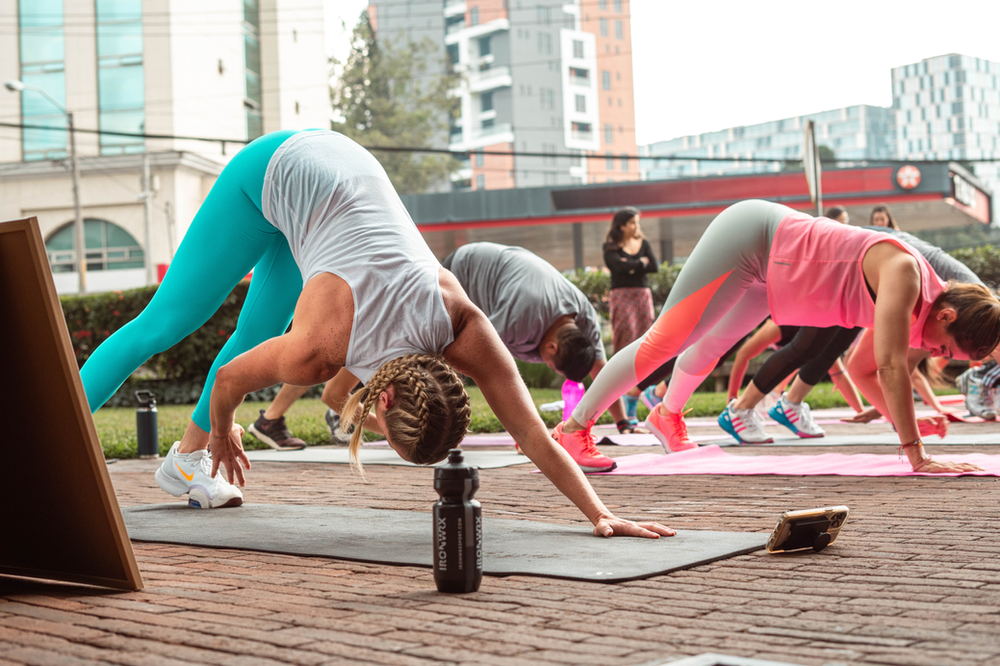Many of us wish to see quick changes in our bodies when we start working out. It's a common desire - we want those toned muscles and improved fitness ASAP. But, here's the catch: achieving real, lasting results takes time.
In this blog post, we're going to talk about why it's crucial to be patient and have realistic expectations as you work on your fitness. We'll also look into when you can start seeing results from working out.
So, let's get into it and figure out how fitness progress really happens!
Setting Realistic Expectations
Embarking on a fitness journey often comes with dreams of overnight transformations. However, it's crucial to dispel the myth that significant changes happen overnight. Fitness is a gradual process, and setting realistic expectations plays a pivotal role in staying motivated.
The myth of overnight transformations
It's easy to get caught up in the idea that one intense workout or a week of strict dieting will completely transform your body. The reality is that sustainable results require time and consistent effort.
Rapid changes are not only unrealistic but can also be harmful to your body.
Importance of individual differences in fitness progress
Every person's body is unique, responding differently to exercise and nutrition.
Factors like genetics, metabolism, and lifestyle contribute to these differences.
Understanding and respecting these individual variations is crucial when gauging your own progress. What works quickly for one person may take more time for another, and that's perfectly normal.
Setting realistic short-term and long-term goals
Instead of fixating on immediate, drastic changes, focus on setting achievable short-term and long-term goals. Short-term goals provide stepping stones, helping you celebrate small victories along the way.
Long-term goals offer a broader perspective, guiding your overall fitness journey. By breaking down your aspirations into manageable steps, you'll build a foundation for success while maintaining a realistic outlook.
Initial Changes: The Early Days
As you kick off your fitness journey, the initial days can bring about some noticeable changes.
These early transformations, though subtle, lay the groundwork for more significant progress down the road.
Immediate effects on mood and energy levels
One of the first things you might notice is an almost instant boost in mood and energy. Exercise triggers the release of endorphins, the body's feel-good hormones, creating a positive impact on your mental well-being.
Even a short workout can lift your spirits and enhance your overall energy levels, making those early sessions worthwhile beyond physical benefits.
Initial changes in strength and endurance
In the early days of working out, improvements in strength and endurance become apparent.
While you may not be lifting massive weights or running marathons just yet, you'll likely notice that daily activities become a bit easier. Tasks that once left you winded might not be as challenging, indicating your body is adapting positively to the new demands you're placing on it.
The role of consistency in the early stages
Consistency is a key player in the initial stages of your fitness journey. Regular workouts, even if they're not intense, contribute significantly to your progress.
It's not about going all out every day but establishing a routine that your body can adapt to over time.
Consistent effort ensures that the positive changes you experience early on become a solid foundation for the more substantial transformations ahead. So, stay committed, and remember that every small step counts.
Building a Foundation: Weeks 4-8
As you progress into the fourth to eighth weeks of your fitness journey, you're entering a crucial phase. These weeks mark a period where your body is adapting to the changes, laying the foundation for more visible transformations.
Understanding the adaptation phase
Around this time, your body is in the process of adapting to the consistent exercise routine. This adaptation phase is where you start to see more subtle changes in how your body responds to physical activity.
Your muscles and cardiovascular system are becoming more efficient, and your overall fitness level is on the rise.
It's a critical period that sets the stage for more noticeable improvements in the coming weeks.
Changes in body composition and muscle definition
Weeks 4-8 often bring about changes in your body composition and muscle definition. While you might not witness drastic alterations, you may notice subtle toning and tightening.
As your body sheds excess fat and gains lean muscle mass, these changes become more apparent. This phase lays the groundwork for a more sculpted physique, rewarding your commitment to consistent exercise.
The impact of nutrition on early results
Nutrition plays a pivotal role during these weeks. The impact of what you eat becomes increasingly evident as your body transforms.
A well-balanced diet that supports your fitness goals enhances the effectiveness of your workouts.
Adequate protein intake aids in muscle repair and development, while essential nutrients contribute to overall health. Understanding the symbiotic relationship between nutrition and exercise becomes crucial for maximizing the benefits of your hard work during this foundational phase.
Tangible Transformations: Months 2-3
As you hit the two to three-month mark in your fitness journey, tangible transformations begin to emerge, showcasing the fruits of your consistent efforts.
Notable changes in muscle tone and size
During months 2-3, you'll likely observe more pronounced changes in muscle tone and size. Your muscles become firmer and more defined as a result of continued strength training.
This period is where your body starts to visibly reflect the hard work you've been putting into your workouts, providing a satisfying glimpse into the transformation process.
Increased stamina and improved cardiovascular health
Months 2-3 bring about improvements in your stamina and cardiovascular health. Activities that once left you breathless become more manageable, and you find yourself able to sustain higher levels of intensity during workouts.
These cardiovascular enhancements contribute not only to your fitness level but also to your overall health and well-being.
Common challenges and overcoming plateaus
While progress is evident, it's essential to acknowledge and address common challenges that may arise during this phase.
Plateaus can be discouraging, but they are a normal part of the fitness journey.
Overcoming these plateaus requires reassessing your routine, introducing variety, and staying committed. By recognizing challenges as opportunities for growth, you'll navigate through these moments more effectively.
Long-Term Progress: Beyond 3 Months
As you move beyond the initial three months, your fitness journey evolves into a more long-term commitment. This phase brings about gradual and sustainable progress.
Gradual improvements in performance and physique
Beyond the three-month mark, you'll experience a steady, gradual improvement in both performance and physique.
Consistency remains key as you continue to challenge your body with diverse workouts. Small, incremental advancements compound over time, contributing to a sustained elevation in your overall fitness level.
Sustaining motivation through ongoing progress
Maintaining motivation becomes crucial in the long-term.
Celebrate ongoing progress, no matter how small, to stay inspired. Recognizing the journey as a series of achievements, both big and small, fosters a positive mindset that fuels your commitment to a healthy lifestyle.
The importance of adjusting workout routines
To keep the momentum going, periodically reassess and adjust your workout routines. As your body adapts, introducing new exercises, varying intensities, and setting fresh goals ensures continued growth. This adaptability is essential for breaking through plateaus and sustaining long-term progress in your fitness journey.
Factors Influencing Progress
When it comes to making progress in your fitness journey, several factors come into play, shaping the outcomes of your efforts.
Genetics and body type
Understanding that genetics and body type influence how your body responds to exercise is crucial.
While some individuals may naturally gain muscle more easily, others might find it easier to shed fat. Embrace your unique genetic makeup and tailor your fitness approach to align with your body's predispositions.
Nutrition and diet habits
Nutrition plays a pivotal role in determining the success of your fitness endeavors. The old saying "you are what you eat" holds true, as the right balance of nutrients fuels your workouts and aids in muscle recovery.
Cultivate healthy eating habits that align with your fitness goals, ensuring your body receives the nourishment it needs to thrive.
Sleep and recovery as crucial components
Ample sleep and effective recovery are often underestimated factors in making progress. Your body repairs and grows during sleep, making it an integral part of the fitness equation.
Prioritize sufficient rest and recovery periods, allowing your muscles to recover and preventing burnout.
Quality sleep contributes not only to physical well-being but also to mental resilience.
Celebrating Non-Scale Victories
In your fitness journey, victories extend beyond what the scale says. Recognizing these non-scale achievements is essential for fostering a positive mindset and sustaining motivation.
Recognizing improvements beyond the scale
Look beyond the numbers on the scale to acknowledge improvements like increased energy levels, enhanced mood, and greater flexibility. Non-scale victories often indicate positive changes in your overall well-being that may not be immediately quantifiable but are nonetheless significant.
Boosting mental well-being through fitness achievements
Fitness achievements have a profound impact on mental well-being. Whether it's reaching a new personal record, completing a challenging workout, or mastering a new exercise, these accomplishments contribute to increased self-esteem and a positive self-image.
Embrace the mental benefits that accompany your physical progress.
Encouraging a holistic approach to health and fitness
A holistic approach to health and fitness involves recognizing the interconnectedness of physical, mental, and emotional well-being. Prioritize self-care, stress management, and mindfulness alongside your workout routine.
By nurturing your overall health, you create a foundation for sustainable progress and long-term success in your fitness journey.
Adapting to Setbacks and Challenges
On the road to fitness, setbacks and challenges are inevitable. Learning how to adapt and overcome these obstacles is essential for long-term success.
Common obstacles in the fitness journey
Recognizing common hurdles is the first step in navigating through them. Challenges such as lack of motivation, time constraints, or unexpected life events can disrupt your fitness routine.
Understanding that these obstacles are part of the journey allows you to develop strategies to overcome them.
Strategies for overcoming plateaus
Plateaus, where progress seems to stall, are a common occurrence in fitness.
To overcome plateaus, consider introducing variety into your workouts, adjusting your intensity or trying new activities.
Periodically reassessing your goals and celebrating small victories can reignite your motivation and help break through stagnant periods.
The role of resilience and perseverance
Resilience and perseverance are indispensable traits in overcoming setbacks. When faced with challenges, view them as opportunities for growth rather than insurmountable barriers. Cultivate resilience by learning from setbacks, adjusting your approach, and staying committed to your fitness goals.
Perseverance, the ability to persist in the face of difficulties, will carry you through the toughest times on your journey.
Conclusion
When do you Start Seeing Results from Working Out?
The timeline for seeing results from working out can vary from person to person. In general, some people may start noticing immediate changes, such as improved mood and energy levels.
Within the first few weeks, there might be initial gains in strength and endurance.
Visible changes in muscle tone and size typically become more noticeable around the two to three-month mark. However, it's crucial to remember that long-term progress continues beyond three months, with gradual improvements in performance and physique.
Factors influencing progress include genetics, nutrition, sleep, and recovery. Celebrating non-scale victories, recognizing achievements beyond just weight loss, contributes to a positive mindset. Adapting to setbacks and challenges, such as plateaus, requires resilience and perseverance.
The journey to visible fitness results is unique for each individual, but with consistency, realistic expectations, and a holistic approach, positive changes can be achieved over time.
Final Thoughts
Above all, enjoy the journey.
Fitness is not just about reaching a destination; it's about the experiences, lessons, and transformations along the way. Find joy in the process, celebrate your achievements, and appreciate the continuous improvements in your well-being.
By embracing the journey, you not only enhance your fitness but also cultivate a sustainable and fulfilling lifestyle.
Original Article












